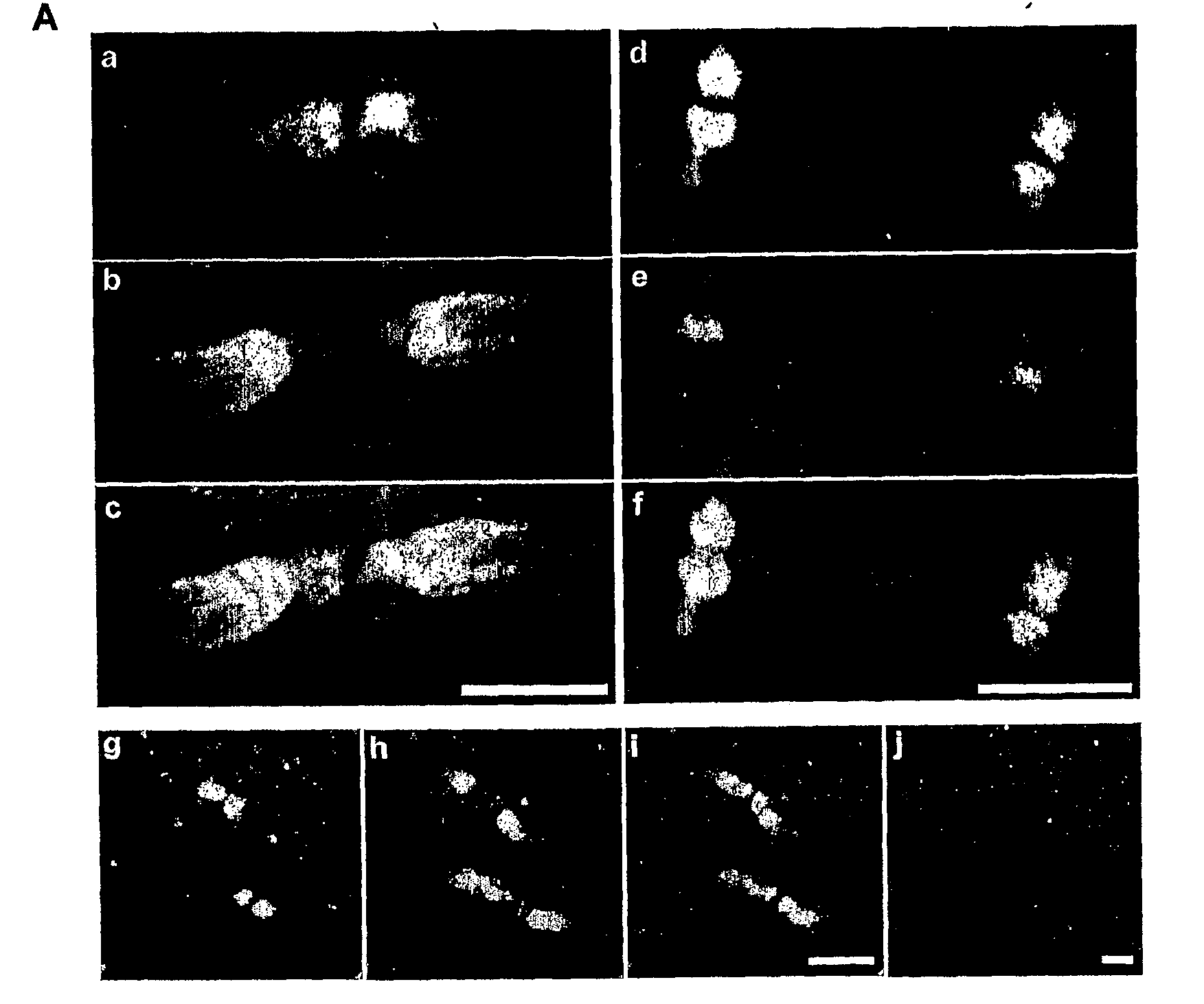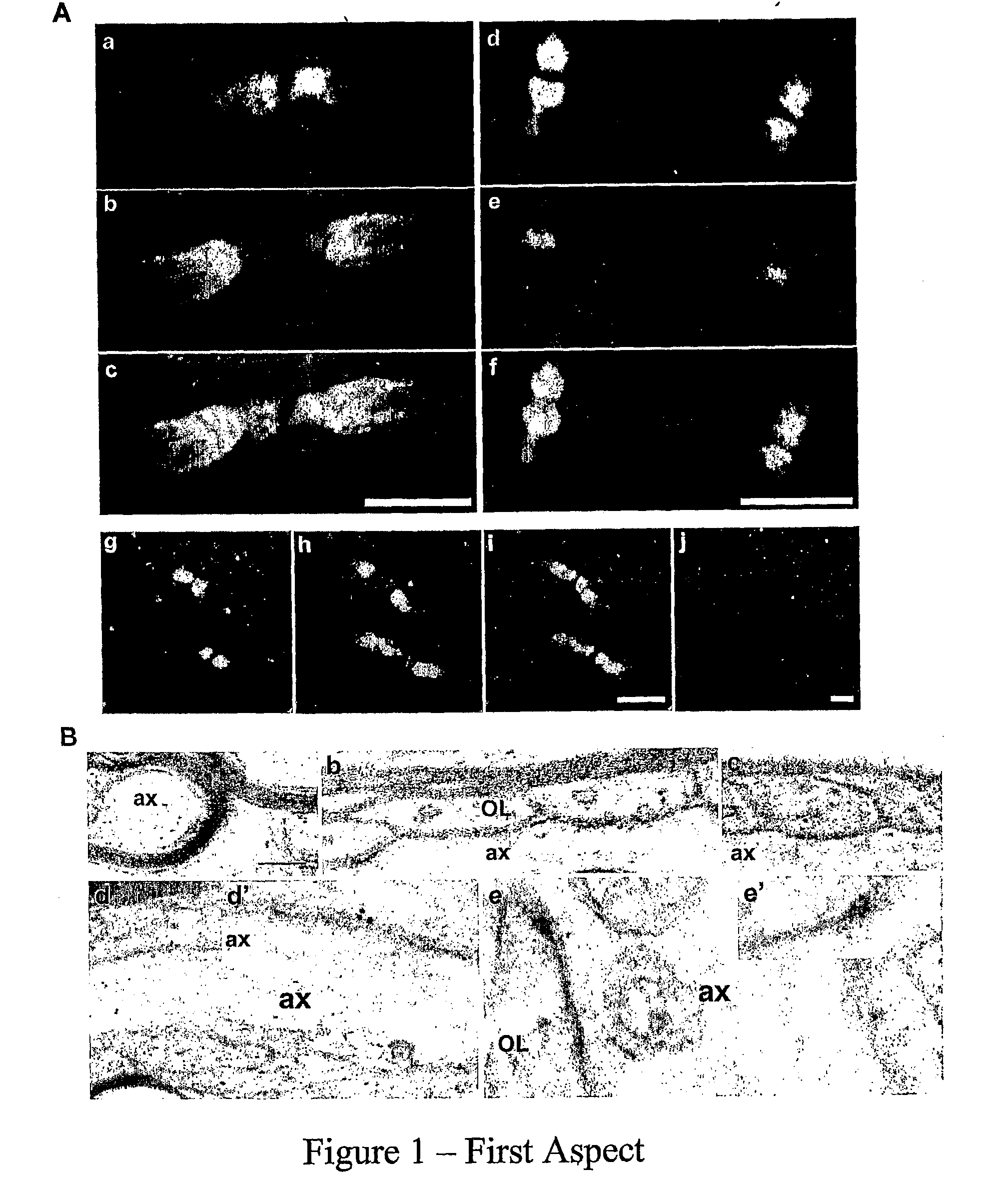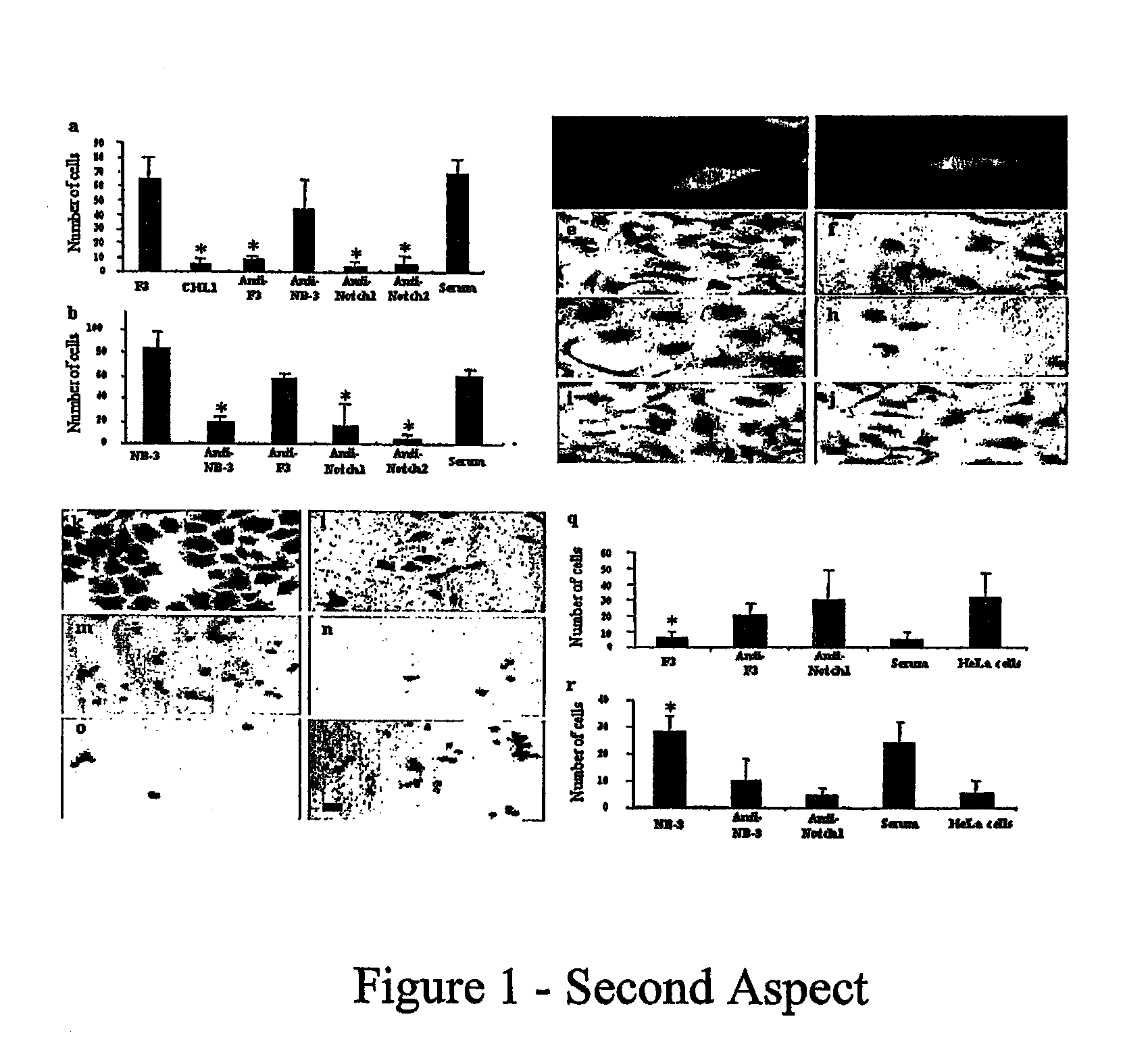Materials and methods relating to treatment of injury and disease to the central nervous system
a central nervous system injury and material technology, applied in the field of new materials for treating the injury and disease of the central nervous system, can solve the problems of inability to establish functional connections, the death of nerve cells due to injury is a difficult problem, and the little one can do to address the primary injury, so as to optimise the properties of antibodies and minimise the immunogenic response
- Summary
- Abstract
- Description
- Claims
- Application Information
AI Technical Summary
Benefits of technology
Problems solved by technology
Method used
Image
Examples
Embodiment Construction
Results
Nogo-A is Localized to the Paranodes of Myelinated Axons
[0102]The distribution of Nogo-A was examined along the white matter tracts of adult rat brainstem. In longitudinal sections, similar localization patterns of Nogo-A were observed with two different Nogo-A antibodies: one was developed in the inventor's lab (FIG. 1A, a-f; Liu et al, 2002) and another was a kind gift from Dr. Stephen Stritmatter (Yale University) (FIG. 1A, g-i; Wang et al, 2002). Nogo-A immunoreactivity (green) was confined specifically to paranodal segments along myelinated axons (FIG. 1A), as evidenced by double immunofluorescence labeling with Kv1.1 (red: FIG. 1A, a-c, g-i) or the Na+ channel (red; FIG. 1A, d-f). The specific labeling of Nogo-A in axonal domains was undetectable after the Nogo-A antisera (1:200) were premixed with 100 fold molar excess of antigen (FIG. 1Aj). The Nogo-A staining (green) flanks nodal Na+ channel labeling (red), and is flanked by juxtaparanodal Kv1.1 labeling (red), thus ...
PUM
| Property | Measurement | Unit |
|---|---|---|
| concentration | aaaaa | aaaaa |
| concentration | aaaaa | aaaaa |
| length | aaaaa | aaaaa |
Abstract
Description
Claims
Application Information
 Login to View More
Login to View More - R&D
- Intellectual Property
- Life Sciences
- Materials
- Tech Scout
- Unparalleled Data Quality
- Higher Quality Content
- 60% Fewer Hallucinations
Browse by: Latest US Patents, China's latest patents, Technical Efficacy Thesaurus, Application Domain, Technology Topic, Popular Technical Reports.
© 2025 PatSnap. All rights reserved.Legal|Privacy policy|Modern Slavery Act Transparency Statement|Sitemap|About US| Contact US: help@patsnap.com



